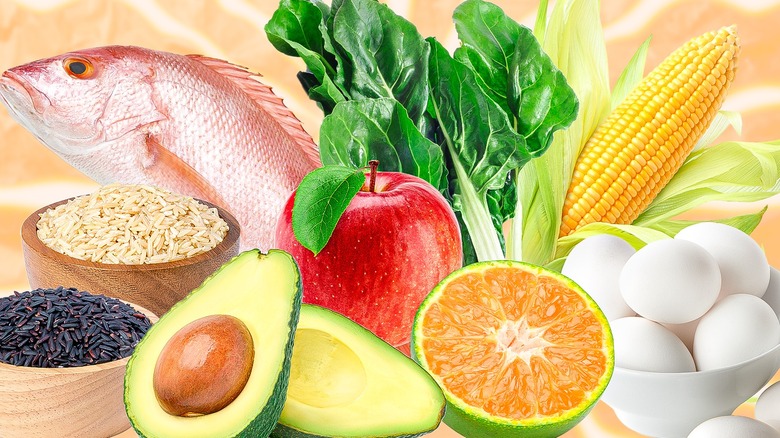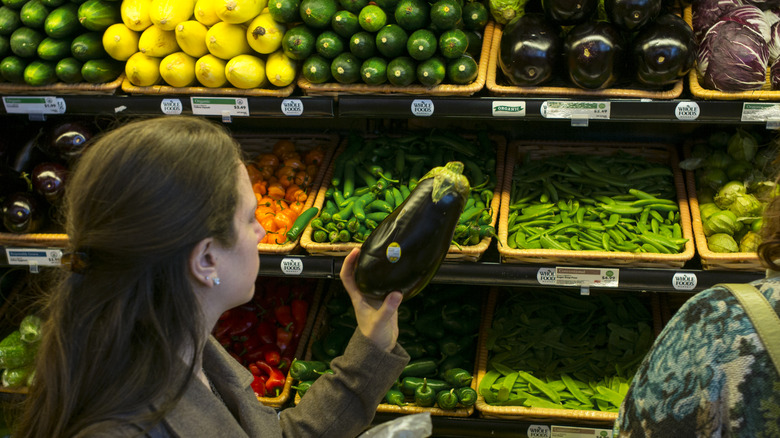What It Really Means To Eat A Whole Foods Diet
In a world where processed foods dominate grocery stores and supermarket aisles, a whole foods diet represents a significant shift towards buying and eating more raw, unprocessed food. These foods have not undergone considerable processing. Processed foods often contain added sugars, salts, fats, and other additives, like chemical preservatives, that you don't find in nature. When we process or refine food, we often strip the food of its nutrients and fiber; in this case, brown rice is less processed and contains more fiber and nutrients than white rice.
Whole foods are anything edible directly from the earth, including fresh fruits and vegetables, whole grains and rice, legumes like beans and lentils, animals, fish, and animal byproducts, like eggs. While we prefer fresh whole foods straight from nature, pre-washed, frozen, some canned goods, and minimally processed food, like wheat flour and rolled oats, can be a part of a whole foods diet and healthy eating.
If you're looking to eat a whole foods diet, reach for food in their most natural forms, such as an ear of corn in its husk instead of canned corn with unfamiliar additives, a fresh fish fillet for home cooking over-processed fried fish fingers, or a whole steak rather than canned unknown meats. Focus on foods with fewer and more recognizable ingredients, prioritizing natural over processed.
Eating a whole foods diet requires shifting your shopping and cooking habits
Ready to embrace a whole foods diet? First, you'll have to buy more whole foods, and one effective strategy is to shop primarily around the grocery store or supermarket's perimeter. This is typically where the freshest foods, including fruits and vegetables, are located. The central and frozen aisles often contain more processed items, like boxed and canned foods. Toward the back perimeter is usually where the fresh meats and seafood counters are, often next to each other.
Another tip is to become familiar with reading labels. Look for products with short ingredient lists and ingredients that you recognize and can pronounce. Avoid items with a long list of additives, preservatives, and artificial flavorings. Adopting a whole food diet also requires a change in your cooking habits. You might spend more time in the pantry and kitchen preparing meals from scratch at home, washing, cutting, peeling, and cooking fresh vegetables and seasoning and cooking your proteins and grains. While this can be more time-consuming than opting for quick, processed options like microwavable TV dinners and canned spaghetti or mac and cheese, the benefits to your health and well-being make it a worthy investment.

